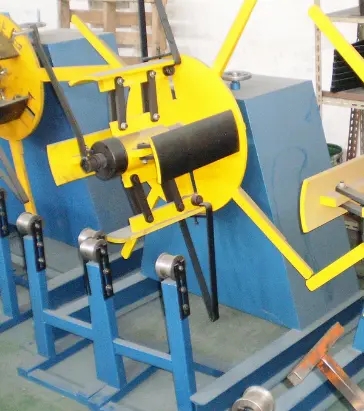
Stainless Steel Pipe Making Equipment An Overview
Stainless steel pipes are integral to various industries, including construction, automotive, chemical, and food processing. The production of these pipes involves sophisticated equipment and processes that ensure high quality and durability. This article provides an overview of the essential equipment used in the making of stainless steel pipes.
1. Raw Material Preparation
The pipe-making process starts with the selection of high-quality stainless steel sheets or coils, which are typically manufactured from a variety of stainless steel alloys. The raw materials are inspected for defects, and the necessary grades are chosen based on the desired application. After selecting the raw materials, they are cut to the appropriate dimensions for further processing.
2. Tube Formation
The primary equipment for tube formation is the pipe welding machine. This machine typically uses various methods, such as TIG (Tungsten Inert Gas) welding, MIG (Metal Inert Gas) welding, or high-frequency induction welding. The choice of welding technique depends on the pipe specifications and intended use. The process begins with the raw material being fed into the machine, where it is shaped into a cylindrical form.
Once the stainless steel sheet is formed into a tube, the edges are prepared for welding. This phase involves using a combination of rollers and induction coils. The edges are heated to the melting point, allowing them to fuse together and form a continuous steel pipe. After the welding process, it is crucial to monitor the weld quality to ensure that it meets industry standards.

4. Heat Treatment
To enhance the mechanical properties and corrosion resistance of the welded pipes, heat treatment equipment is utilized. This process involves heating the pipes to a specific temperature and then cooling them at a controlled rate. This step also helps relieve stresses accumulated during welding and improves the material's overall integrity.
5. Finishing Processes
After heat treatment, the pipes undergo several finishing processes. These include pickling, passivation, and polishing. Pickling removes surface oxides and impurities, while passivation enhances corrosion resistance. Finally, polishing gives the pipes a smooth finish, which is essential for aesthetics and, in some applications, hygiene.
6. Quality Control
Quality control is critical throughout the pipe-making process. Advanced ultrasonic testing and X-ray inspection equipment are often used to ensure there are no internal defects. Additionally, physical tests measure the tensile strength and ductility of the finished products.
Conclusion
Stainless steel pipe making equipment is a complex assembly of machines and processes that work together to produce high-quality pipes. From material preparation to welding, heat treatment, and finishing, each stage is vital for ensuring the final product meets the stringent requirements of various industries. As technology continues to evolve, the equipment used in stainless steel pipe production will become increasingly sophisticated, allowing for greater efficiency and enhanced product quality.